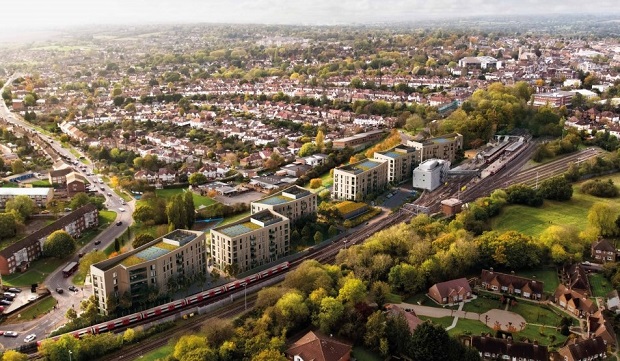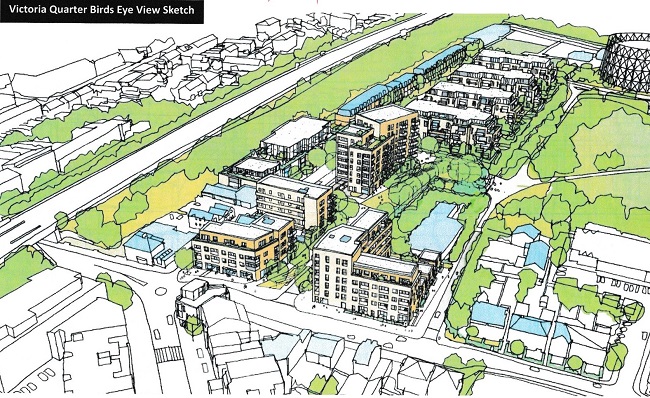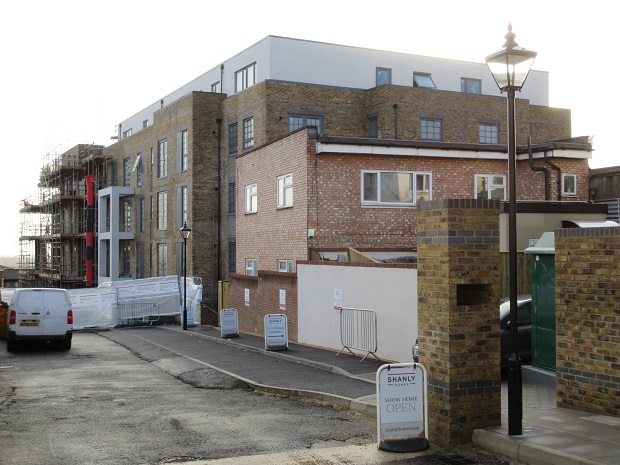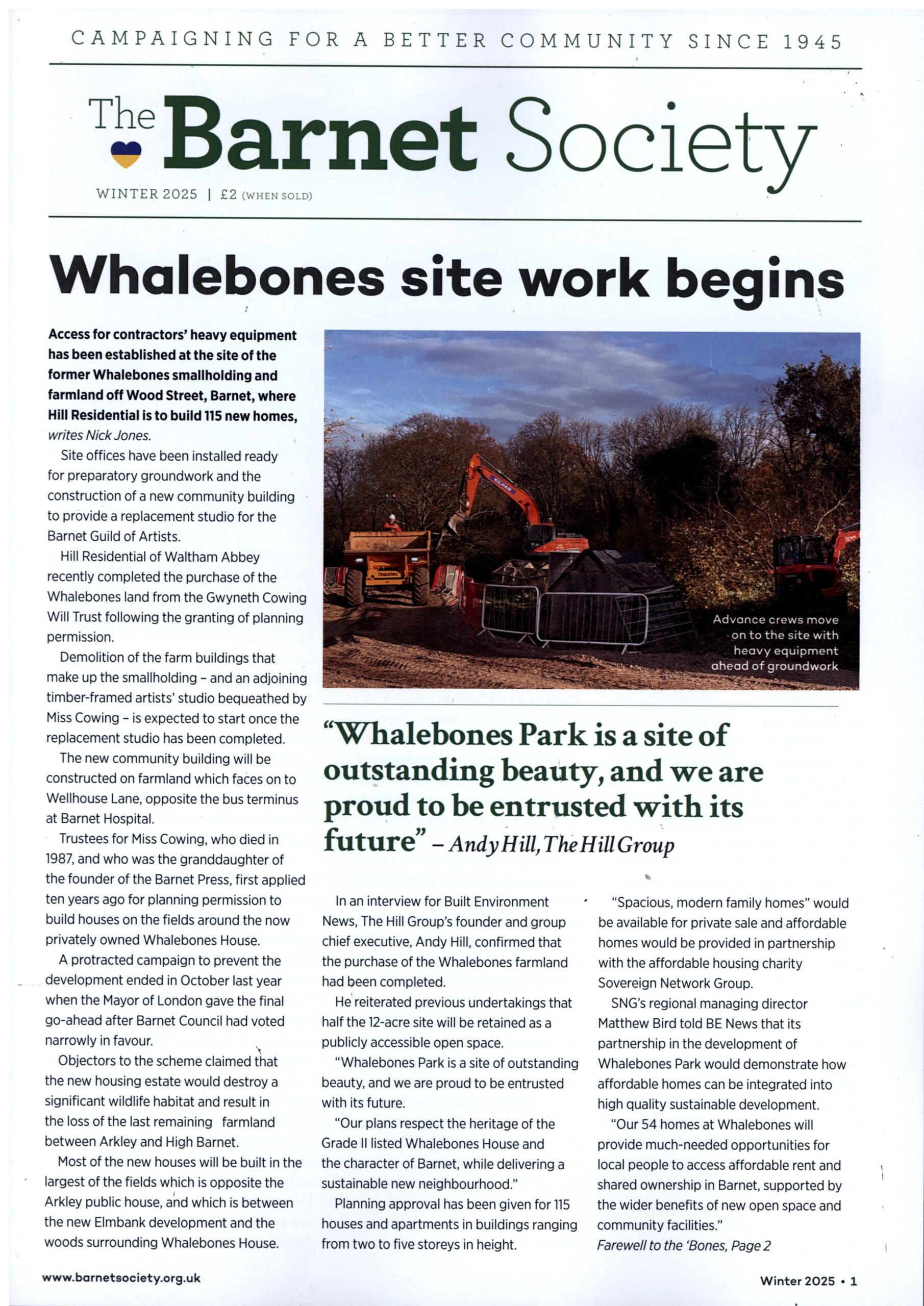Chipping Barnet MP condemns top-down pressure for “so many” blocks of flats in her constituency

Theresa Villiers blames government house building targets for putting pressure on local councils to accept “entirely inappropriate” high-rise developments in suburban neighbourhoods like Barnet.
She says she has never known a time when there were “so many” applications to build blocks of flats in her Chipping Barnet constituency.
A recent scheme for a row of high-rise flats on the car park of High Barnet underground station – see above — met massive resistance and was dropped by Transport for London.
But there is still “ever-increasing top-down pressure” for blocks of flats that she considers are out of character with the area – and TfL is looking for a new partner for the tube station site for its original plan to build up to 292 flats.
Ms Villiers had the chance at Prime Minister’s questions (9.11.2022) to highlight her demand for local decision making on housing plans, rather than having to follow Whitehall targets.
She urged Rishi Sunak to ensure that the Levelling Up Secretary Michael Gove brings forward changes in forthcoming legislation.
Mr Sunak replied that the government was committed to providing enough homes for future generations and building them where they were needed.
He gave Ms Villiers the reassurance that he wanted decisions to be taken locally with a “greater say” for residents and communities rather than “distant bureaucrats”. Mr Gove would meet her to discuss her plea that the government should move away from “top-down” targets.
Earlier in the day, Ms Villiers had told an inquiry into the Barnet Local Development Plan that the area could not cope with the current target. Earmarking sites for 46,000 homes across the borough over the next 15 years could “urbanise the suburbs” and do serious damage to the local environment and quality of life for residents.
The need to respect the character of local neighbourhoods, rather than have to follow “centrally determined” housing targets, was one of the arguments which Ms Villiers used earlier this year when opposing the high-rise scheme proposed for the site of the former gas works at New Barnet.

An early artist’s impression – see above – illustrates the scale of the development which has been since been reduced and amended by developers Citystyle Fairview in what so far has been their unsuccessful attempt to gain planning approval.
Ms Villiers’ objection to the gas works site redevelopment – to be known as Victoria Quarter – was that 13 blocks of flats ranging in height from four to seven storeys was inappropriate in an area of Victorian and Edwardian houses and would amount to a “significant urbanisation” of New Barnet.
In an article for the Conservative Home website www.conservativehome.com she appeals to Mr Sunak and Mr Gove to honour Conservative Party commitments to scrap centrally determined housing targets.
These targets had been “pushed up and up” in recent years when it was clear they would lead to overdevelopment in areas where there was insufficient capacity within local public services.
“I have been following planning matters since I was elected as an MP 17 years ago.
“I have never known a time when there were so many applications for blocks of flats which are entirely inappropriate in a low-rise suburban neighbourhood like my constituency in Barnet.
“I know that my colleagues representing rural areas feel the same sense of despair about ever-increasing pressure to build over green fields and agricultural land. It has started to feel as though we are under siege.”
Time and again at council planning committee meetings or appeal hearings the demand had been made that building had to go ahead otherwise targets would not be met.
Where planning committees refused to be bullied in approving an application, there was the risk that planning inspectors would overrule their decisions on the ground that the project was needed to meet their target.
“This erosion of local control over planning is compounded by the obligation to demonstrate that an area has a supply of sites capable of meeting the targets by producing what is known as a ‘five-year land supply’, said Ms Villiers.
“If this cannot be shown, there is not a blade of grass or square foot of land which is not in danger of coming under the bulldozer.
“And yet the process of producing the list of sites is heavily influenced by developers who send their expensive lawyers to hector both planning inspectors and councils at public hearings to determine the local plan which contains five- year land supply.”
One application which is being fiercely contested is for a seven-storey block of flats, Intec House, at 49 Moxon Street, High Barnet. The Barnet Society has objected strongly to the developers’ attempt to squeeze 92 flats and several businesses into proposed building, next to the King George’s Fields. A decision is awaited from Barnet Council.

One recent development which was approved recently by Barnet Council — on which the Barnet Society was neutral — is Shanly Homes’ new Lightfield development off Barnet High Street.
A five-story block containing 50 one and two-bedroom apartments, plus eight town houses, is nearing completion on what was the site of workshops in the former Brake Shear House complex.

